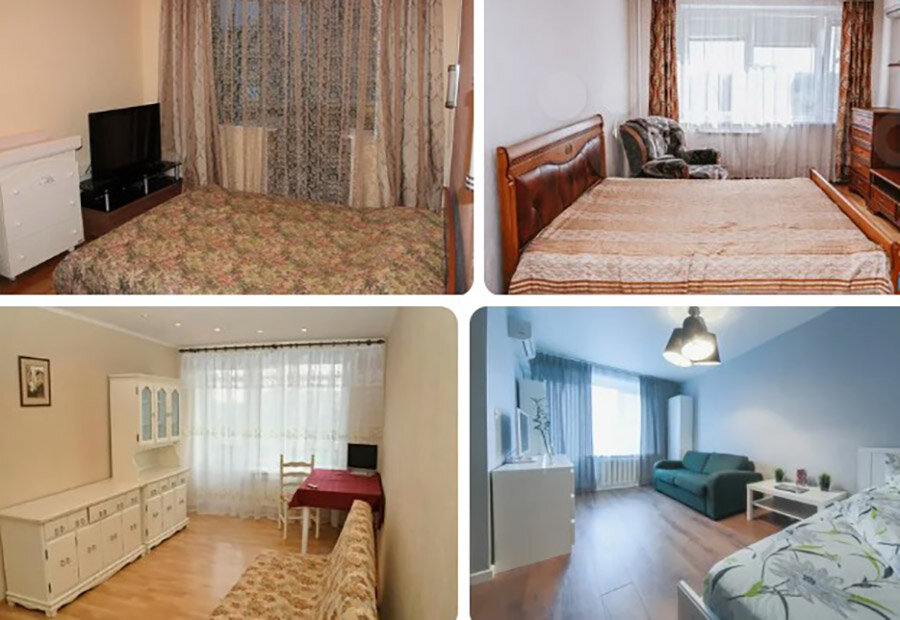читайте также
 Trump Tower to Be Built in Belgrade as Authorities Prioritize the Controversial Project
Trump Tower to Be Built in Belgrade as Authorities Prioritize the Controversial Project
 Rental rates for housing in Warsaw have reached a record level
Rental rates for housing in Warsaw have reached a record level
 Where the Wealthy Live Comfortably: The Latest Ranking of Cities and Countries
Where the Wealthy Live Comfortably: The Latest Ranking of Cities and Countries
 Emergency landings in Portugal: rising incidents raise questions about flight safety
Emergency landings in Portugal: rising incidents raise questions about flight safety
 Prime London Property Prices Fall 3.2%
Prime London Property Prices Fall 3.2%
 How EU countries issue Schengen visas to Russians after the new restrictions
How EU countries issue Schengen visas to Russians after the new restrictions
Real Estate / Вusiness / Analytics / Investments / Reviews / News / Russia / Real Estate Russia 11.05.2025
Russia’s Rental Housing Market Doubles in Supply as Prices Begin to Fall

The supply of rental apartments in Russia’s largest cities has doubled over the past year, according to Vedomosti, citing data from CIAN. Homeowners are increasingly opting to rent out their properties instead of selling, amid falling demand and record-high mortgage rates. As a result, rents for one-bedroom apartments have dropped by 10% in six months.
Rental Listings Surge Across Million-Plus Cities
As of February 2025, there were approximately 60,000 rental listings in Russia’s million-plus cities—twice as many as in February 2024 and 2.3 times more than the September 2024 low. In Moscow alone, listings reached 21,900 units—up 96% year-on-year.
Experts link this spike to the reduced affordability of homeownership. With mortgage rates soaring, more apartments remain unsold and are being rented out instead.
Longest Downtrend in Rental Prices Since 2020
The rental market has been experiencing a six-month-long correction—the longest since the pandemic spring of 2020. Since September 2024, average rent for one-bedroom apartments in major cities has dropped 9%, from 44,200 to 40,700 rubles. Yet, prices are still 10% higher than in February 2024.
Agencies such as Etazhi and Inkom Real Estate confirm the trend:
- Annual growth in rental supply: 20–25%
- Since summer 2024: increase of 35–43%
- January–February 2025 alone: 1.5x increase
Segment Trends: Compact Units Stay Strong
Despite the overall decline, small units remain in demand:
- Studios in Moscow rent for 46,000–57,000 rub/month (+4–7% YoY)
- One-bedroom apartments: 47,000–53,000 rub (+11–24.5%)
This reflects stable demand for compact and affordable units, particularly in central urban areas.
Rise of Investment Properties in Rental Supply
Many of the new listings are investment properties purchased during the 2021–2022 preferential mortgage programs. These units entered the market in 2024 when sales timelines doubled, prompting owners to rent while waiting for better selling opportunities.
According to Etazhi, over 80% of new apartments are now bought in cash, often with steep discounts. Owners unwilling to lower prices choose to rent temporarily to preserve asset liquidity, contributing further to supply.
From Market Peak to Gradual Slowdown
Rental prices peaked in fall 2024. According to Dom.RF Analytics, Q3 rental rates hit historic highs:
- Moscow: 111,000 rub/month
- St. Petersburg: 56,000 rub/month
- Other large cities: ~43,000 rub/month
Compared to late 2022, that’s a 70% increase. But with the end of state-backed housing programs, both buyers and developers have lost access to affordable financing, making rentals a forced alternative.
At the peak:
- Active rental listings: ~55–56,000
- Average rental period: 22 days in Moscow, 29 days in St. Petersburg
- Longer turnaround indicates lower demand and slower leasing cycles
Returns Lag Behind Government Bonds
Dom.RF’s Mikhail Goldberg notes that rental returns now trail government bonds and bank deposits by 2–2.5x. As a result, many investors list properties both for sale and for rent, seeking flexibility and loss minimization.
Outlook: A Shift Toward Flexibility
In 2025, Russia’s rental market has entered a phase of price adjustment and strategic rebalancing. If current conditions persist, renting will remain a more affordable option than buying—but landlords will need to adapt their pricing and leasing strategies to a changing economic landscape.





